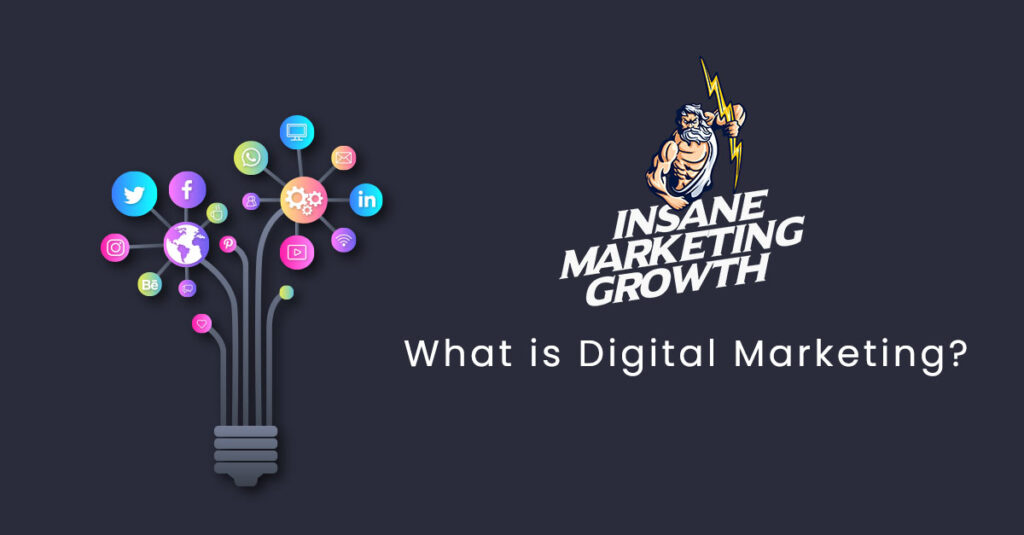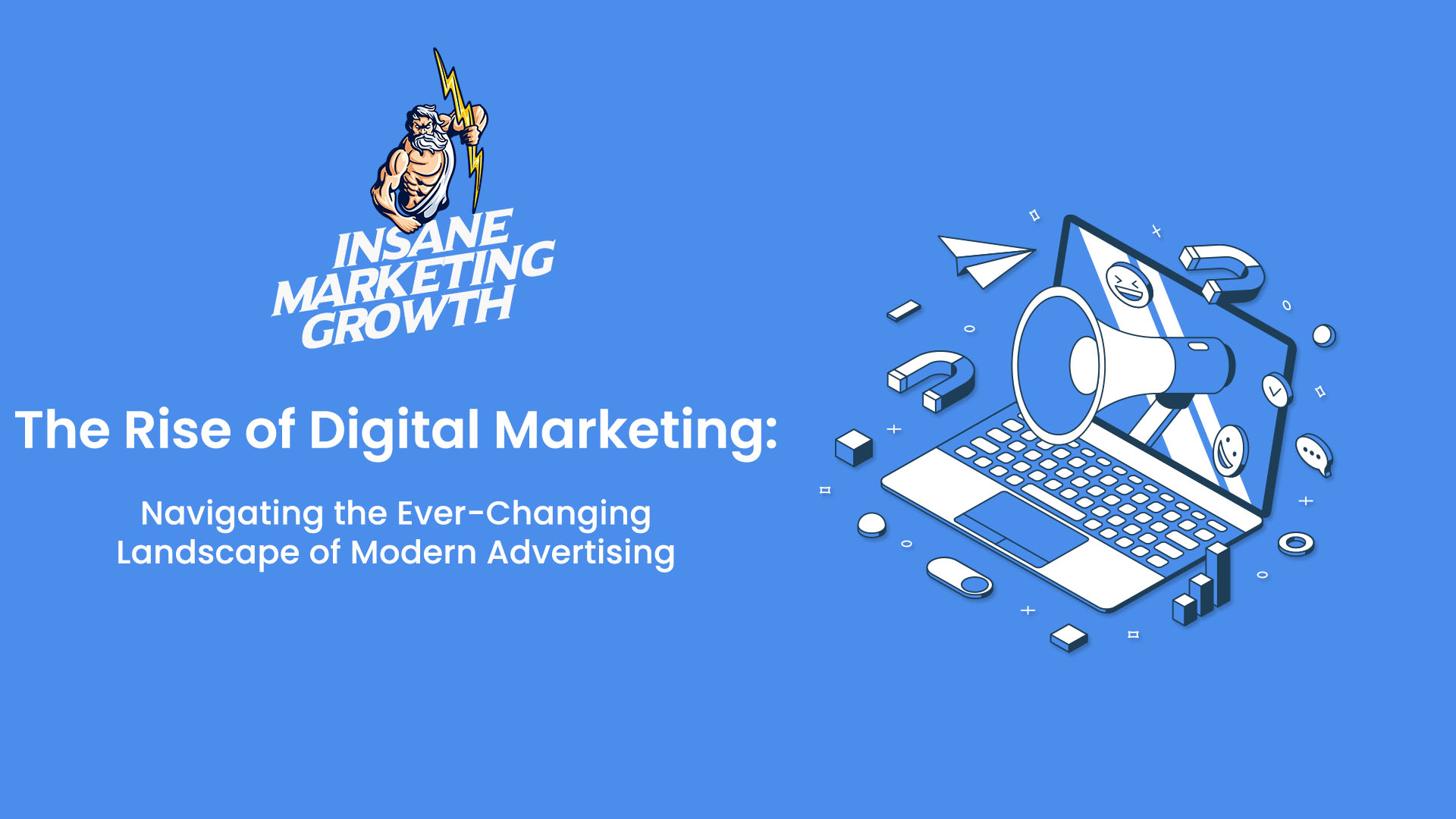In recent years, digital marketing has exploded onto the marketing scene, and its effects have been anything but small. Traditional marketers and old-school companies have struggled to keep up with the ever-changing world of Internet marketing while customers, leads, and clients have become more adept in this new landscape. But companies can’t afford to ignore changes in the way people look to buy, and that is why they have stepped into the modern way of marketing.

What is Digital Marketing?
Digital marketing is the practice of promoting products or services with the help of digital devices and technology. In simple words, digital marketing is any form of marketing that occurs online with the help of mobile, laptop, internet, etc. In addition to digital signage and technology that may not be connected to the internet. It can range from anything as complex as automated email marketing initiatives all the way down to the content choices on your website’s blog. Now, you know what is digital marketing, so let’s proceed and know the types of digital marketing.
Types of Digital Marketing
If you have a computer or a smartphone, as many of us do, you’ve experienced digital marketing. It could be an email in your inbox, a search result when using Google, an ad on Facebook, a text message sent to your phone, or a post by an influencer on Instagram. As you can see, internet marketing is an expansive field with many areas of specialization. The core forms of digital marketing, however, are:
- Search Engine Optimization (SEO)
Put, SEO consists of carefully structuring and optimizing your website’s pages to achieve the best position possible on search engine result pages (SERPs) when internet users perform a search on an engine like Google that’s related to your business. - Paid Social and Paid Search Advertising
Ads that appear on social media are paid social ads, and all that seems on SERPs when you enter a query are paid search ads. Advertisers create these paid ads and compete with others for positions on their chosen social platform or the SERP for their selected search engine. - Email Marketing
Any marketing that occurs through email is known as email marketing, and it’s not just for newsletters and coupons. All marketing-related interaction over email fits into this category. - Content Marketing
Every effort to market through online content is considered content marketing (and often employs SEO, paid search, and paid social advertising). For example, all these content types (and more) are grouped under the content marketing category:
• Blog posts
• Infographics
• Videos
• eBooks
• White papers - Affiliate Marketing
Affiliate marketing is a type of digital marketing in which companies reach out to third party websites to advertise their products and services. These are also known as referrals. The target audience of the affiliate website becomes important in this aspect of digital marketing. Some of the ways that affiliates are incentivized are based on:
• Registrations
• Email sign-ups
• Sales and
• Subscriptions - Mobile Marketing
Mobile Marketing is a type of digital marketing focused on reaching the target audience via mobile devices. We all are excessive users of mobile devices and there is a good chance of tapping on to their attention by following effective marketing strategies. Push notifications, emailers, social media posts, MMS, SMS, newsletters are a part of Mobile Marketing. - Social Media Marketing
Social Media Marketing is a practice that increases brand awareness, and helps brands achieve their marketing objectives. A wide range of content buckets are available for social media marketing like videos, memes, static posts, trending posts, testimonials, stories, reels, etc.. If you perform SMM properly, there is a high chance that your conversion rates will increase. - Influencer Marketing
Influencer marketing involves collaborating with popular individuals on social media platforms who have a significant following and influence over their audience. Businesses leverage the reach and credibility of influencers to promote their products or services. - Video Marketing
Video marketing utilizes videos to engage and connect with the target audience. It can involve creating promotional videos, explainer videos, tutorials, or behind-the-scenes glimpses to effectively convey a brand’s message and capture viewers’ attention. - Remarketing/Retargeting Remarketing or retargeting is a strategy that involves targeting ads specifically to users who have previously interacted with a brand’s website or shown interest in their products or services. It helps to re-engage potential customers and encourage them to complete a desired action.
- Online PR and Reputation Management Online PR focuses on managing a brand’s reputation in the digital space. It involves strategies to monitor and respond to online reviews, manage social media conversations, and handle any negative publicity effectively, thereby maintaining a positive brand image.
- Voice Search Optimization
With the rise of voice assistants and smart devices, optimizing content for voice search has become crucial. Voice search optimization involves tailoring website content to match the conversational queries and natural language used in voice searches, enhancing visibility in voice search results. - Native Advertising
Native advertising involves creating and placing ads that blend seamlessly with the platform’s content, providing a non-disruptive and cohesive user experience. These ads match the format and style of the platform, making them appear more organic and less intrusive. - Chatbot Marketing
Chatbots are AI-powered virtual assistants that can engage in real-time conversations with users. Chatbot marketing involves utilizing chatbots on websites, social media platforms, or messaging apps to provide customer support, answer queries, and guide users through the sales process. - User-generated Content (UGC)
User-generated content refers to content created by consumers or users of a brand’s products or services. UGC can be in the form of reviews, testimonials, social media posts, or videos. It is an effective way to build trust, encourage engagement, and harness the power of word-of-mouth marketing.
What’s the Difference Between Inbound Marketing and Digital Marketing?
Inbound Marketing
Inbound marketing is a marketing approach that can be applied to both digital and traditional methods. It functions like a magnet, where marketers provide valuable content that attracts the intended audience, and the audience discovers it on their own. In other words, it’s a non-intrusive form of marketing that allows the audience to find the content naturally.
Digital Marketing
Digital marketing encompasses various strategies, including both inbound and non-inbound methods. When you create compelling content on your website that attracts readers and converts them into customers, you are employing an inbound marketing strategy. On the other hand, if you utilize ads on social media or search engines to promote your products or services, you are taking a more proactive approach that may not fall strictly under the inbound marketing category.
What’s Happening in Digital Marketing Today?
Over the past 25 years, since the advent of clickable banner ads and the rise of platforms like Yahoo, the digital marketing landscape has undergone significant transformations. Nowadays, companies such as Google and Facebook dominate the digital marketing space.
Digital marketing is an ever-evolving field, constantly adapting to new trends and technologies. Emerging areas like artificial intelligence (AI) and video marketing are experiencing rapid growth. Even well-established practices like search engine optimization (SEO) continue to evolve each year, necessitating continuous learning for digital marketers.
How Does A Business Define Digital Marketing?
Businesses define digital marketing as a strategic approach to connecting with customers through electronic technology. This method enables them to interact, promote, and sell their products or services to prospective customers through various online channels and platforms.
By understanding the differences between inbound marketing and digital marketing and staying abreast of the latest trends and techniques, businesses can effectively leverage digital marketing strategies to engage their target audience and achieve their marketing goals.”


